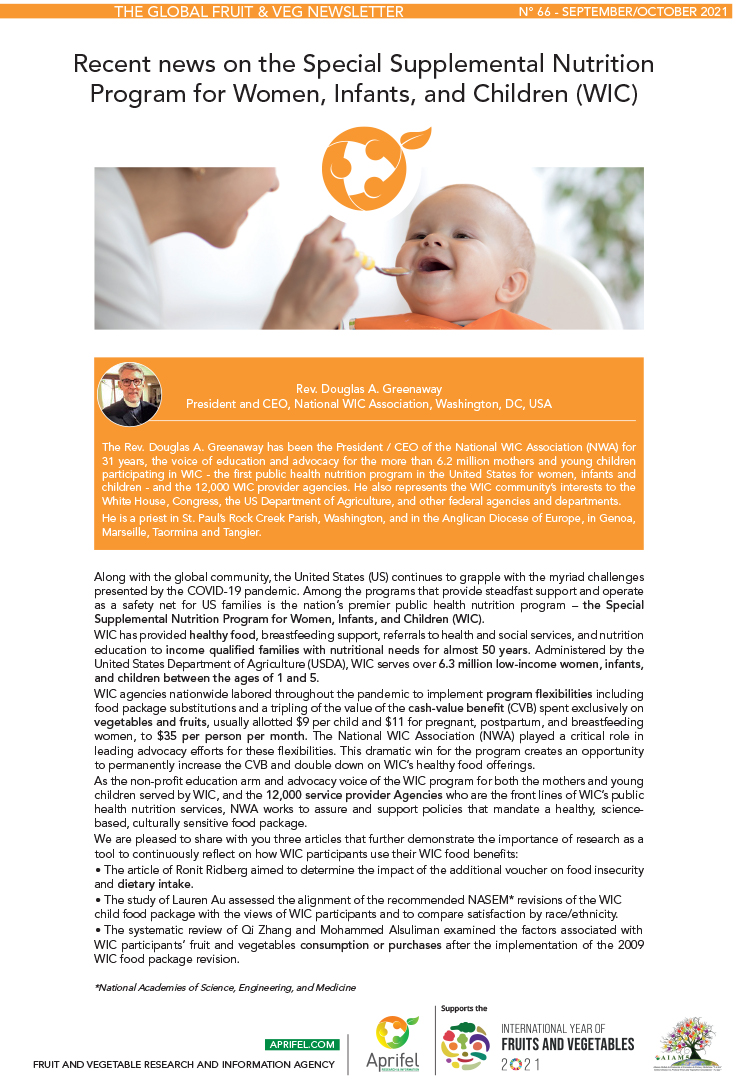The Special Supplemental Nutrition Program for Women, Infants, and Children (WIC)
Editorial
Along with the global community, the United States (US) continues to grapple with the myriad challenges presented by the COVID-19 pandemic. Among the programs that provide steadfast support and operate as a safety net for US families is the nation’s premier public health nutrition program – the Special Supplemental Nutrition Program for Women, Infants, and Children (WIC).
WIC has provided healthy food, breastfeeding support, referrals to health and social services, and nutrition education to income qualified families with nutritional needs for almost 50 years. Administered by the United States Department of Agriculture (USDA), WIC serves over 6.3 million low-income women, infants, and children between the ages of 1 and 5.
WIC agencies nationwide labored throughout the pandemic to implement program flexibilities including food package substitutions and a tripling of the value of the cash-value benefit (CVB) spent exclusively on vegetables and fruits, usually allotted $9 per child and $11 for pregnant, postpartum, and breastfeeding women, to $35 per person per month. The National WIC Association (NWA) played a critical role in leading advocacy efforts for these flexibilities. This dramatic win for the program creates an opportunity to permanently increase the CVB and double down on WIC’s healthy food offerings.
As the non-profit education arm and advocacy voice of the WIC program for both the mothers and young children served by WIC, and the 12,000 service provider Agencies who are the front lines of WIC’s public health nutrition services, NWA works to assure and support policies that mandate a healthy, science-based, culturally sensitive food package.
We are pleased to share with you three articles that further demonstrate the importance of research as a tool to continuously reflect on how WIC participants utilize their WIC food benefits:
- The article of Ronit Ridberg aimed to determine the impact of the additional voucher on food insecurity and dietary intake;
- The study of Lauren Au assessed the alignment of the recommended NASEM revisions of the WIC child food package with the views of WIC participants with children aged 1−4 years and to compare satisfaction by race/ethnicity;
- The systematic review of Qi Zhang and Mohammed Alsuliman examined the factors associated with WIC participants’ fruit and vegetables consumption or purchases after the implementation of the 2009 WIC food package revision.
Rev. Douglas A. GreenawayPresident and CEO, National WIC Association, Washington, DC, USA
